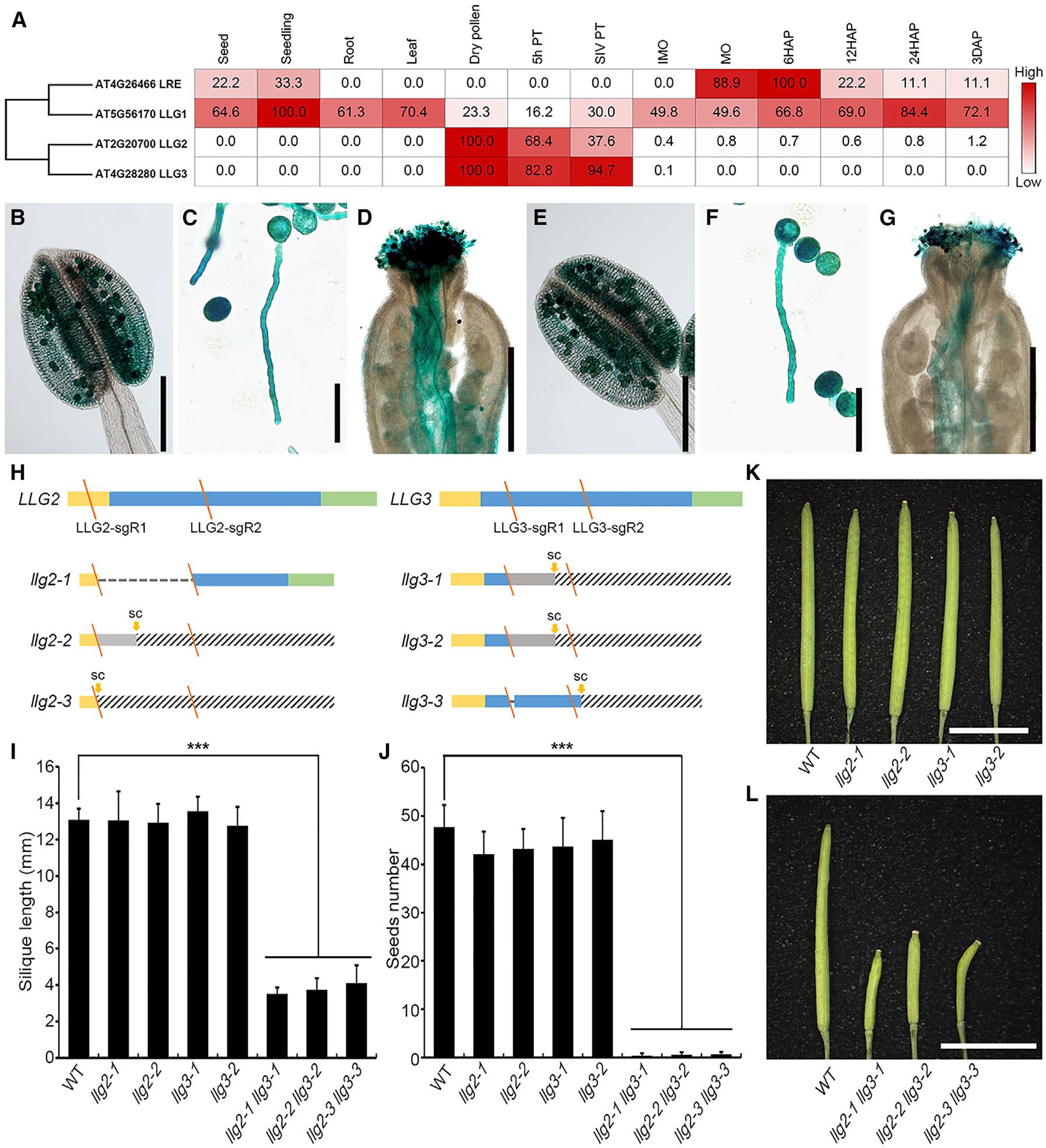Figure 1.

Pollen-Expressed LLG2/3 Function Redundantly in Controlling Fertility in Arabidopsis (A) Phylogenetic analysis of LLG proteins and heatmap showing LLG genes based on RNA sequencing (RNA-seq) data in Arabidopsis. Numbers in frames indicate relative expression levels of each gene in different tissues based on fragments per kilobase million (FPKM) values.
(B–G) LLG2 and LLG3 promoter-driven GUS expression pattern showing LLG2p::GUS activity in the anther (B), pollen tube in vitro (C), and pollen tube in vivo (D). LLG3p::GUS activity in the anther (E), pollen tube in vitro (F), and pollen tube in vivo (G) is shown.
(H) Mutant alleles of llg2 and llg3 generated by CRISPR/Cas9. Diagrams display coding sequences. Yellow rectangles indicate signal peptide (SP), and blue and green bars show predicted mature GPI-AP protein sequences and GPI-modified-dependent signal peptides (GPI-SPs), respectively. Slash (y) denotes localization of sgRNAs (sgRs), dashed lines indicate deletion of large fragments, gray rectangles indicate sequences of frameshift transcripts, and twill rectangles indicate sequences after a stop codon.
(I–L) Phenotypical analysis of single mutants and double mutants. Silique length (I) and seed number per silique (J) of WT and various mutants are shown. The data are mean ± SD; n = 9 (WT, llg2–1, llg2–2, llg3–1, llg2–1 llg3–1, and llg2–2 llg3–2); n = 8 (llg3–2); ***p < 0.001 (Student’s t test). (K) Siliques of WT and single mutants. (L) Siliques of WT and double mutants.
3 DAP, ovules 3 days after pollination; 5h PT, in vitro germinated pollen tubes after 5 h; 6/12/24 HAP, ovules after 6/12/24-h pollination; IMO/MO, immature/mature ovules; SC, stop codon; SIV PT, semi-in vivo germinated pollen tubes. Scale bars: 200 μm in (B and E); 50 μm in (C and F); 500 μm in (D and G); and 5 mm (K and L).
See also Figures S1, S2, and S3.
